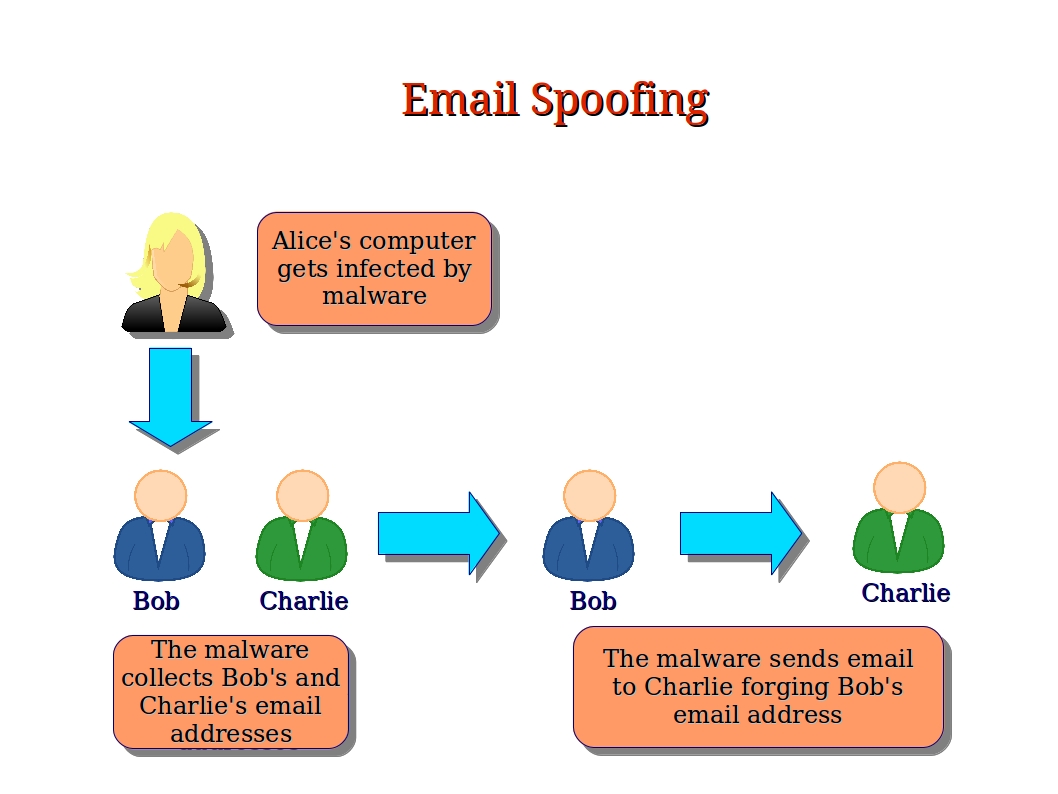
Contents
- What is email spoofing?
- What is an example of email spoofing?
- Is email spoofing a crime?
- Can my email be spoofed?
- How do I identify a spoofed email?
- Can spoofed emails be stop?
What is Email spoofing?
Spoofing is when an email is sent with a fake sender address, making it appear as if it came from a different source.
To get unsuspecting people or businesses to divulge personal information or even send money, email spoofing is commonly used. It’s not always the classic “Nigerian prince” phishing email. Some phishing emails are very convincing, even faking logos and staff information. The forgery also includes a spoofed email address to make it appear as if the email came from the institution.
In other cases, spoofing is used to bypass spam filters by automatically creating fake email addresses for each message. Some forms of spoofing can help users maintain their privacy, which is why services provide disposable email addresses.
What is an example of email spoofing?
A spoofing attack looks like an email from a major national bank like Wells Fargo or US Bank. Most likely, it will be from an email address associated with that bank, such as wellsfargoemail.com. Starting with a serious header like “Account Fraud Warning” or “Overdraw Limit Exceeded,” the email will prompt immediate action. This could include sending sensitive account information, such as account numbers, clicking on a link to a malicious website, or downloading a malicious file.
There are many more examples of spoofing in action. The fake credit bureaus may warn of credit issues.
Is spoofing an email a cybercrime?
Spawning is the act of creating a fake email address to sign up for something. However, spoofing is illegal when it is done to steal valuable information or money. In these cases, the FBI requests spoofing and phishing reports.
Can my email be spoofed?
Spoofer can change the apparent email address. Scammers can use your email address to send a spoof email. Scammers or spammers use real email lists stolen from data theft caches online. In order to appear legitimate, most scammers don’t use the email address of an average online user.
Spamming bots will send you “can’t deliver” emails if your email address is spoofed. It’s not easy to stop them except to filter them out and wait.
Keeping your email private can also help reduce your risk, which ironically means using disposable email addresses.
How do I identify a spoofed email?
It’s difficult, but the best way to follow up is to simply ask for more information without responding to the email. Find the organization’s contact information on their website and call or email them to verify the request.
Check the sender’s name and full email address in the email’s received section. The received notation in an email is an easy way to check for spoofing attempts.
Be wary of any email asking for money. Institutions don’t use email to send invoices or request wire transfers. If an email looks genuine, call the organization and ask for a contact to verify it.
Can spoofed emails be stop?
Scam emails can be detected and removed by many email clients. Use an updated email app to reduce spoofing spam. Keep in mind that you may want to receive emails from the real sender at some point.